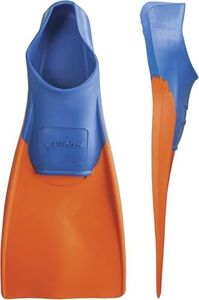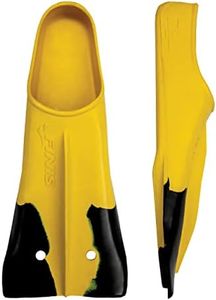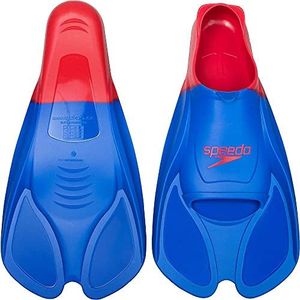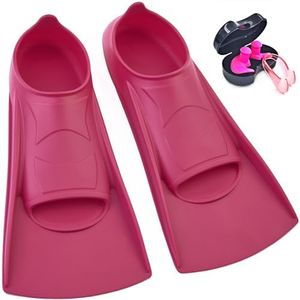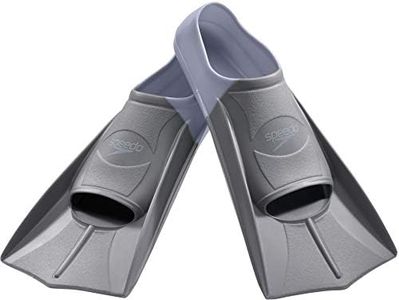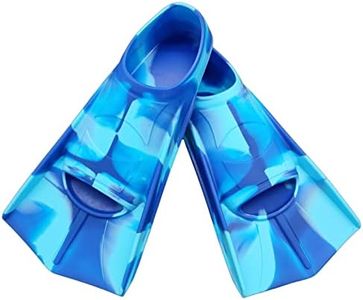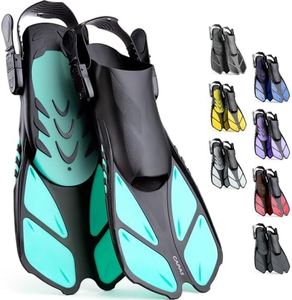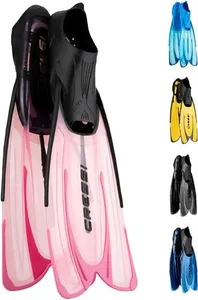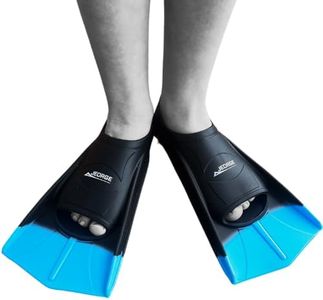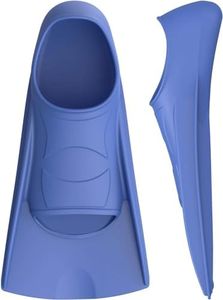We Use CookiesWe use cookies to enhance the security, performance,
functionality and for analytical and promotional activities. By continuing to browse this site you
are agreeing to our privacy policy
10 Best Kids Swim Fins
From leading brands and best sellers available on the web.By clicking on a link to a third party's website, log data is shared with that third party.
Buying Guide for the Best Kids Swim Fins
Choosing the right swim fins for kids can make swimming lessons and pool time much more effective and enjoyable. Swim fins help children learn proper kicking technique, improve their speed, and build leg strength. However, picking the right pair involves more than just choosing their favorite color. You’ll want to focus on a few key specifications to ensure comfort, safety, and swimming success.Fin LengthFin length refers to how long the blade of the fin is from your child’s heel to the tip. Short fins are typically better for beginners and younger swimmers as they make kicking easier, mimic natural movement, and reduce the risk of muscle fatigue. Long fins add more resistance in the water and are better for older kids or those looking to build extra strength and speed. You should match the fin length to your child's experience and goals: short for comfort and learning, long if they want a bigger challenge and are ready for stronger workouts.
MaterialSwim fins are usually made from rubber, silicone, or a blend. Rubber fins are durable, often heavier, and sometimes less flexible, providing more resistance in the water. Silicone fins are softer and more flexible, reducing the chance of blisters and making them more comfortable for sensitive feet. For most kids, especially younger ones or beginners, silicone is the safest bet, while older or more active swimmers might benefit from the added durability of rubber.
Foot Pocket StyleThe foot pocket is the part of the fin that holds your child’s foot. It can be either open-heeled with an adjustable strap or closed-heeled like a shoe. Open-heeled fins are easier to adjust as your child grows and can be worn with swim socks for extra comfort. Closed-heeled fins fit more snugly and are often preferred for their streamlined feel. Choose open-heeled styles for growing feet or ease of use and closed-heeled if your child wants a secure, performance-driven fit.
Size and FitGetting the size right is crucial so the fins stay secure and don’t cause blisters. Fins generally come in size ranges or are grouped by age and foot measurements, so check manufacturer size charts. A proper fit should be snug but not tight, and your child should be able to wiggle their toes. It's important to remember kids' feet grow quickly, so look for adjustable options if you want the fins to last through several swim seasons.
BuoyancySome kids’ fins are slightly buoyant, helping to keep their legs up and encourage proper body position in the water. Highly buoyant fins can be a great help for children who are just learning or those who have trouble floating, while neutral-buoyancy fins feel more like swimming without fins but with added speed. Think about your child’s swimming ability: buoyant fins for newbies, neutral for kids who are more comfortable in the water.
